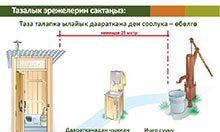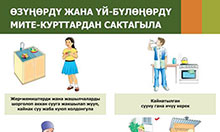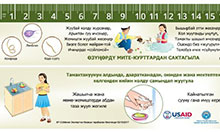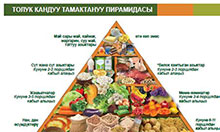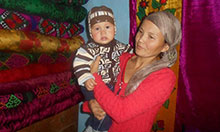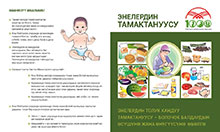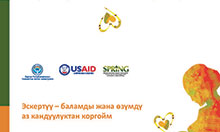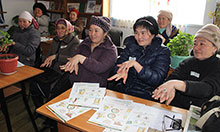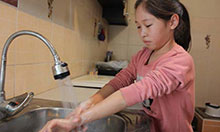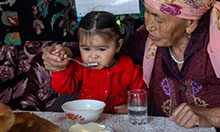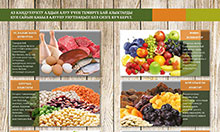 In tandem with the Kyrgyz Association of Village Health Committees, SPRING works through an existing network of “Community Activists,” the primary infrastructure in many communities for awareness raising and the dissemination of social messages. SPRING orients the Activists on a different nutrition-related theme (e.g. exclusive breastfeeding) each month and provides training on the technical content and messages to improve household practices. Activists then conduct household visits (emphasizing the first 1,000 days households with pregnant women or children under two) and community meetings, raising awareness and promoting a few simple key messages and behaviors. They also help to generate demand for the services of health workers, promoting the facility-level workers as an important source of information and health care.
In tandem with the Kyrgyz Association of Village Health Committees, SPRING works through an existing network of “Community Activists,” the primary infrastructure in many communities for awareness raising and the dissemination of social messages. SPRING orients the Activists on a different nutrition-related theme (e.g. exclusive breastfeeding) each month and provides training on the technical content and messages to improve household practices. Activists then conduct household visits (emphasizing the first 1,000 days households with pregnant women or children under two) and community meetings, raising awareness and promoting a few simple key messages and behaviors. They also help to generate demand for the services of health workers, promoting the facility-level workers as an important source of information and health care.
Activists disseminate messages around six themes: exclusive breastfeeding; complementary feeding (including reduced consumption of junk food); dietary diversity for the household (including reduced consumption of junk food); maternal nutrition and anemia; handwashing and clean latrines; and preservation and storage techniques to increase access to a diverse diet.
SPRING works to build the capacity of community-level groups in nutrition and hygiene, as well as SBCC for improved behavior. The long-term social and behavior changes needed for improved nutrition require integrating ongoing SBCC activities into engagement with existing structures and systems, including health promotion units and village health committees.
SPRING pursues opportunities to engage with regional and local media outlets, including cooking shows, interviews, etc. These channels provide an important opportunity for SPRING to engage in the nutrition dialogue and disseminate key messages to target populations, particularly in urban areas. SPRING is also working with a local media firm to produce television spots focused on key nutrition and hygiene messages. Further, the project engages with media representatives (journalists, newspapers, radio, talk shows, etc.) regularly to increase awareness on and media advocacy around nutrition.
